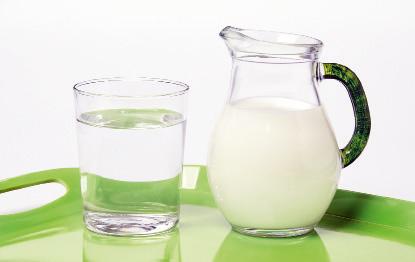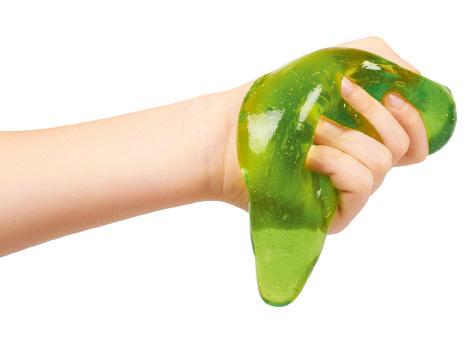
9 minute read
THE PROPERTIES OF MATTER
As you already know, we are surrounded by matter and it can be found in different states.
Matter is anything that has a fundamental property called mass and which occupies space, or volume.
When we refer to matter with precise limits, we use the term object or body. The body may be regular (with a known geometric shape like a sphere, cylinder or cube), or irregular (like a stone). To refer to matter that has no definite limits, we typically use the term ‘material system’. For example, fluids or a sand dune are material systems.
To describe an object or material system, we need to know its properties. We can distinguish between:
• General properties. These are properties that we can use to distinguish matter from non-matter, but are insufficient for telling apart different types of materials. This includes length, mass, volume, surface area and temperature.
• Characteristic or specific properties. These are properties that enable us to distinguish between one type of matter and another. They include density, phase change temperatures, electrical conductivity, thermal conductivity and many others.
1.1 General properties: mass and volume
As we will study in the future, mass is related to different variables, such as the amount of substance, the force of attraction that the Earth exerts on the object (the weight) or the difficulty in changing a state of movement (stop or change direction).
Mass related to the quantity of matter an object or material system has. It is a basic or fundamental quantity.
We measure mass with a balance and its SI unit is the kilogram, kg.
Types of scales
To measure the mass of an object, the object is placed on one pan and weights are placed on the other, from highest to lowest value, until the scales are balanced. The mass of the object is the sum of the masses of the weights used.

In this case, the object is placed on the pan, and the weights on the guides are moved, from the higher to the lower values, until the scales are balanced. The mass of the object is the sum of the values indicated in the weights’ position.
Its operation is much simpler than that of analogue scales. The object is placed on the pan and, by means of sensors, its mass is measured by the action of the weight force. The measured value is shown on the digital display.

The other general property of matter is volume, i.e., the space it occupies. This is a derived quantity. Its SI unit is the cubic metre, m3
Volume is the space occupied by a body or a material system.
To measure the volume of a liquid, it must be placed in a container. The maximum volume that a container can hold is known as its capacity; the unit of capacity is the litre (L).
A litre is the maximum volume that a cubic container with a side length of 1 dm can hold. We often use multiples and submultiples of the litre:
1 L = 1dm3; 1 mL = 1 cm3; 1 kL = 1m3
To measure different volumes of liquids, we use graduated instruments, such as graduated cylinders, pipettes or burettes; however, to measure specific volumes of liquids, we use volumetric instruments, such as volumetric flasks and pipettes whose capacity corresponds to the volume measured.
Find out more about lab equipment for measuring volumes of liquids in the presentation on anayaeducacion. es
Understand, think, investigate...
1 Think and share in pairs. Is light matter? Answer this question by giving arguments based on the general properties of matter.
2 Which quantity has been measured in the picture above, and is the measurement expressed in SI units? If your answer is no, write the value of that measurement in SI units.
The volume of an irregular solid Is the same as the volume of water it displaces; it is obtained by subtracting the volumes of water with and without the solid introduced. The volume of a regular solid is obtained by measuring its dimensions and applying the corresponding mathematical expression; for example, the volume of a cylinder of radius r and height h is:
3 Not all glassware in the laboratory is used to measure volumes. Identify in the left photograph the glassware containers that have other uses, draw them, and explain what they are used for.
4 A common mistake is to confuse the centilitre, cL, with the cubic centimetre, cm3. Using the equivalences we have seen, indicate the relationship between these units.

Density Of Some Types Of Matter
1.2 A specific property: density
The value of this property, which is a derived quantity, allows us to distinguish between substances.
Density is the relationship between the mass of an object or fluid and the volume it takes up.
In mathematical terms, we write this relationship as a ratio (quotient):
In the formula above, m is the mass, which has units of kg in SI, and V is the volume expressed, in m3, so d is the density, which has SI units of kg/m3
In everyday language we tend to misuse the concept of density; for example, when we say that “something floats on water because it weighs little” we are only indicating that it has a low mass. This is incorrect, because for one material system to float on another, the mass to volume ratio of the former must be less than that of the latter, i.e., the former must be less dense than the latter.
1 Design a way to determine the material of which two objects are made, if we suspect that one of them is made of iron and the other of lead.
Data:
Object A: mass = 36.2 g; volume = 3.20 mL
Object B: mass = 33.8 g; volume = 4.30 mL
One way is to calculate the density of each and compare the results with the densities of iron and lead.
To obtain the density in SI units, we must express the mass and volume in their corresponding SI units, kg and m3, respectively.
To obtain the mass in kg, divide by 103: mA = 36.2 g = 0.036 2 kg = 3.62 · 10–2 kg mB = 33.8 g = 0.033 8 kg= 3.38 · 10–2 kg
Understand, think, investigate...
5 Use the conversion factors and scientific notation to change the units of the measurements given in the previous exercise.
6 Circle of points of view. Indicate how you would measure the volume of the objects of the Problem solved. Why do you think this data is expressed in mL?
7 Could you store 8 kg of ethanol in a 7 L cylinder? Will there be too much or too little ethanol?
We know that 1 mL = 1 cm3. To express the volume in cm3, we will have to divide by 106:
VA = 3.20 mL = 3.20 · 10–6 m3
VB = 4.30 mL = 4.30 · 10–6 m3
Dividing mass by volume, we obtain the density:
Comparing these results with the table, we can see that material A corresponds to lead and B to iron.
8 Revolving sheet. Balsa wood (Ochroma piraminade) is a highly sought-after wood, as it is not very dense (d = 160 kg/m3) and yet it is very strong. What applications do you think this type of wood has?
9 Calculate the mass of a surfboard with a volume of approximately 60 dm3 using the data from the previous activity.
1.3 Measuring density
Direct measurement of density
The density of a liquid can be measured directly using a density meter: a glass instrument consisting of a hollow cylinder with a weighted bulb at one end that can float vertically. To measure the density value, place it vertically in the liquid and allow it to float freely. When it is still, read the value on the measuring paper.

Indirect measurement of density
Density is a derived quantity, so it can be calculated from the values of the quantities that define it, mass and volume. To do this, measure the values of the mass and volume of the body independently, and calculate the value of their quotient to obtain a value for the density.
To measure mass, a balance is used. To measure volume, we will need different instruments depending on whether we are dealing with a regular solid, an irregular solid, or a liquid.
• Guidelines for using a balance
We can use analogue scales (one or two arms) or digital scales. Their use has already been described above. The zeroing error must be avoided: when the pans are empty, the balance must read zero. There are screws at the ends of the arms to adjust them. In the case of electronic scales, they must be set to zero each time a weighing is performed.

• Guidelines for using a cylinder
When using graduated instruments, such as a cylinder, it is important to avoid the parallax error (see picture below).

Investigating the densimeter
Experimental method
Look at the photo. What property is the density measurement based on? Research buoyancy and share your findings with your group.
Maths
CREATE m = 24 g = 0,024 kg
Create a visual reminder of the rounding off rules when dividing.
V = 8 mL = 0,000 008 m3
Using a balance, measure the mass of the object whose density we want to know.
Using a measuring cylinder, calculate its volume (you will find instructions on anayaeducacion.es)
Finally, we divide the mass of the object by its volume, and apply the rounding off rules.

Pure Substances And Mixtures
When we study fluids, we can find two different situations: pure substances, substances that aren’t mixed with other substances, or a mix of several pure substances.
A pure substance is a type of matter that cannot be decomposed into simpler ones by physical methods. A mixture is a fluid formed of several pure substances that we can separate using physical methods.
2.1 Pure substance: simple and compounds
There are two types of pure substances: simple (or elementary) substances, and substances that we call compounds:
• Simple substances are substances that are made up of atoms of the same chemical element, so they cannot be broken down by chemical change (no new ones are formed).
For example, O2 is a simple substance made up of only the chemical element oxygen, O.
• Compounds are substances that can be broken down into other substances by chemical methods.
The specific case of water is explained in the following table.
Pure
Simple substance
Gold is a simple substance, so its characteristic properties are constant. Moreover, it does not decompose upon chemical change.

Compound substance
Many medicines are compound substances that break down into more simple substances when they are swallowed, injected, etc. To ensure they work properly, we must always follow the doctor’s instructions.
During the process of electrolysis (which you will study later), the action of an electric current breaks down water, H2O, into two simple substances: hydrogen, H2, and oxygen, O2. This is a chemical change.

2.2 Heterogeneous mixtures
The substances that make up this type of mixture are sometimes distinguishable at first glance. Their physical properties vary from one part to another, which is why they are called heterogeneous. Heterogeneous mixtures exist in the solid state (figure below) as well as in liquid and gaseous states. Some of these mixtures are suspensions, which will be discussed later.
2.3 Homogeneous mixtures
Such mixtures are also called solutions. At first glance, we cannot tell the difference between a pure substance and a homogeneous mixture, as their properties are the same in every place. Solutions can be in solid, liquid and gaseous states (the box below shows an example of each case).
In order to know whether we are dealing with a solution or a pure substance, we must somehow cause the separation of the substances that form the mixture, or we must know their composition beforehand.
In order to achieve the separation of the components of the mixture, the change of state of one of them is usually caused by heating the mixture.
Types of mixtures
Understand, think, investigate...
10 Round table. Bottled water usually has a chemical analysis on the label that gives information about the substances present. Can we say that it is a pure substance? Explain your answer.
11 Chain of consequences. Is milk a pure substance? Design a method to test your answer and represent its stages and conclusions.
12 The mirror. Explain the difference between a mineral and a rock. Which is a pure substance and which is a mixture? Give an example of each.
13 Find out about the origin of the word “electrolysis” and relate it to the picture on the previous page. What are the applications of the electrolysis of water?
Sand: heterogeneous mixture
Steel: alloy (solid solution)
As can be seen at a glance, the different materials that make up the sand can be distinguished, as they have different sizes, textures, colours, etc.
Drinking water: liquid solution
Drinking water is a liquid solution of salts and water. If we were to ingest pure water, this would cause an imbalance in our body.
Air: gaseous solution
Air is a mixture of gases. It is a gaseous solution. Its composition is approximately 79% nitrogen and 21 % oxygen.
Steel is a solid solution of iron and carbon. Solid metal solutions are called alloys. Their properties are different to those of their components. For example, they are tougher and lighter.

The different properties of alloys mean they are commonly used in the construction and automobile industries, and in implants and prosthetics, among many other things.
People have used some alloys since ancient times and they are still found in everyday objects. These include:
• Bronze: a mixture of copper and tin.
• Brass: a mixture of copper and zinc.
• Nickel silver: a mixture of copper, nickel and zinc.








